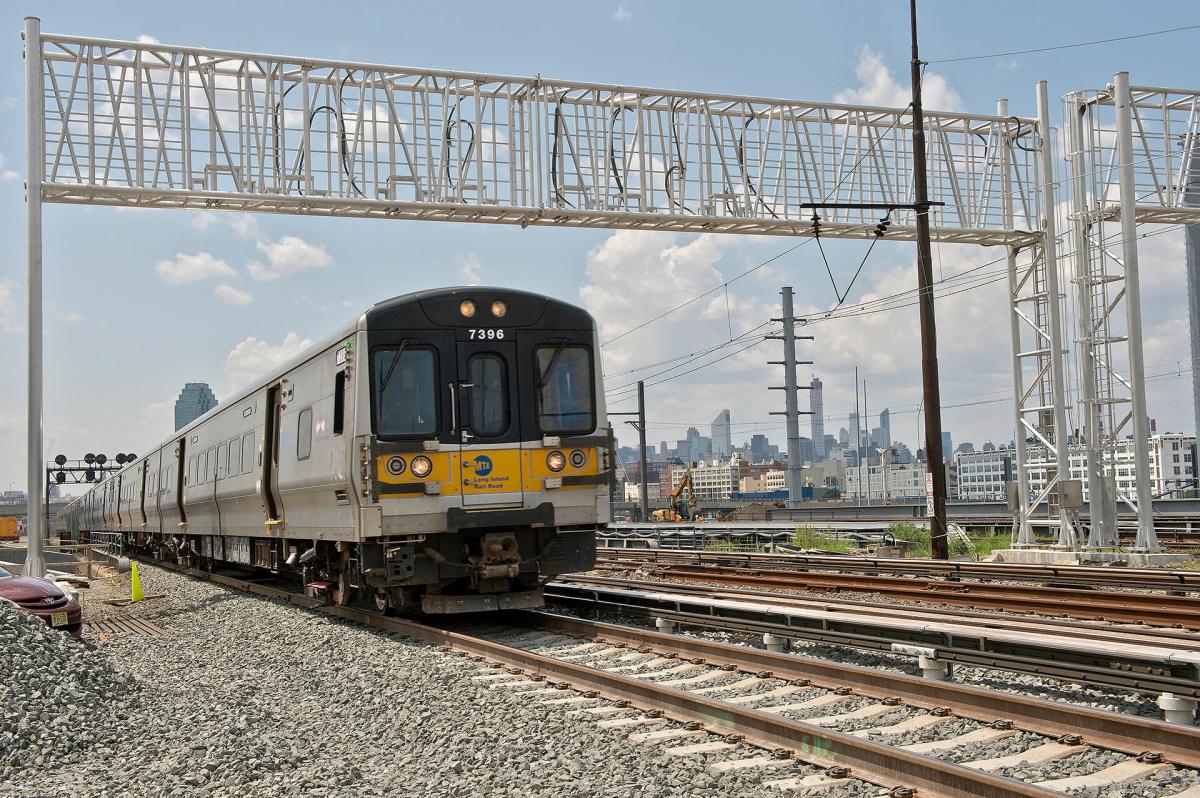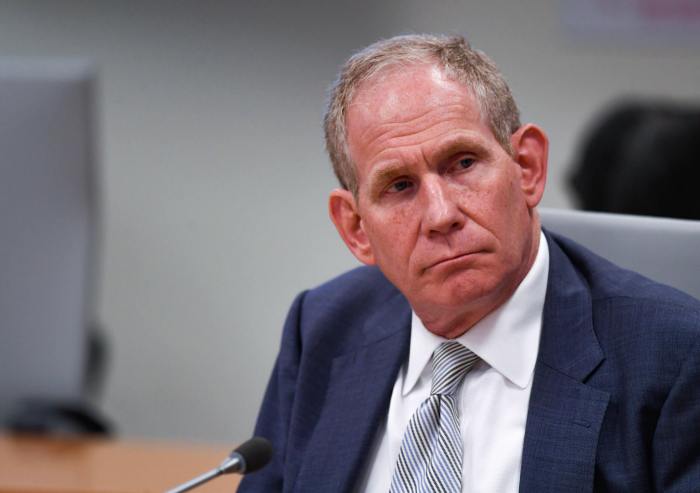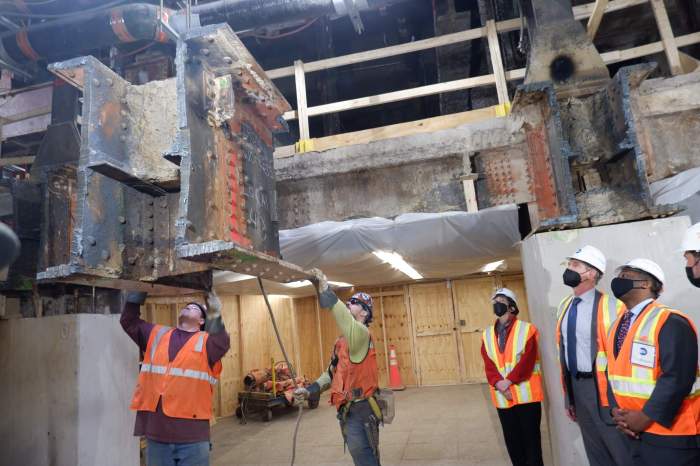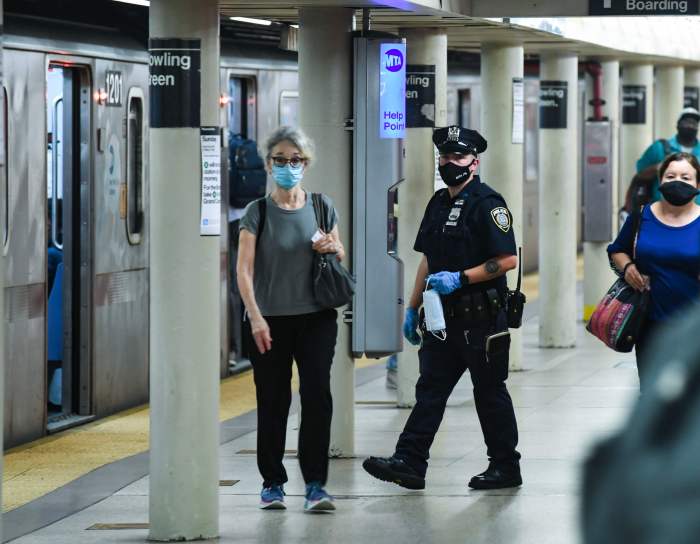The MTA’s overtime expenditures increased to a whopping $1.3 billion in 2022, with more than 500 workers pulling in six figures of extra pay.
The findings were compiled in a report by the Empire Center, a think tank that conducts research on New York state government.
OT expenditures at the transit agency increased from $1.1 billion in 2021, and the number of employees pulling in six figures of OT jumped from 320 in 2021 to 566 in 2022. More than 1,100 workers made more than double their normal salary in OT.
Harry L. Dobson, a structures supervisor at Metro-North, pulled in the highest amount of OT of any MTA employee in 2022, hauling in $229,770.89 on top of $113,372.96 in salary.
MTA Police Lieutenant Robert Rau, meanwhile, added $212,209.68 in OT on top of his $168,339.28 to take home $386,320.42 in pay last year. That makes Rau the second-highest-paid employee in the MTA’s roughly 70,000-person workforce, trailing only Chair and CEO Janno Lieber, who pulled in just over $400,000.
Rau is paid well in excess of not only his boss at the MTA Police, Chief John Mueller. He’s even paid more than Cathy Rinaldi, the head of both Metro-North and the Long Island Rail Road (LIRR). Neither Rau nor Dobson could be reached for comment.
Ken Girardin, a fellow at the Empire Center and one of the report’s authors, laid the blame squarely on union rules that effectively require supervisors to give first dibs on OT shifts to the workers with the most seniority, allowing a small cadre of workers to say yes to every OT request and pull in massive extra pay. He said that the failure of state lawmakers to rein in OT results in higher fares and worse service for customers.
“Whenever the Long Island Rail Road or the MTA as a whole have difficulty with money, the go-to response from the Legislature has been to let them collect more money, or send more money. It hasn’t been to reform the organization or limit their cost drivers,” Girardin told amNewYork Metro. “The Senate and the Assembly would rather see people pay higher fares for poorer service than to rock the boat with respect to the MTA’s unions.”
The drying-up of federal COVID-19 operating aid and sluggish recovery of ridership from the pandemic led MTA leaders to warn this year it was approaching a “fiscal cliff” that would require draconian fare hikes, service cuts, and layoffs to ameliorate. State lawmakers responded with a budget that hiked payroll taxes on city residents and set aside future casino revenue for the authority.
The MTA is also raising fares next month as part of the financial rescue package, bringing the price of a subway or bus ride to $2.90, and plans to implement “efficiency” savings to reduce operating costs. The MTA now projects a balanced budget through 2027.
Labor reforms were never part of the discussion, however, since the contracts were already baked in, but the Empire Center notes that the increase in OT alone last year, $171 million, covers half of the $369 million in additional revenue the MTA projects to generate through the fare increase.
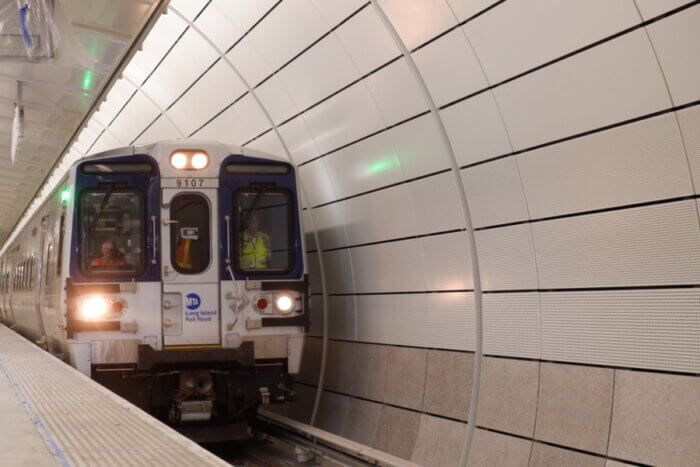
The OT issue is particularly pronounced at the LIRR, which had by far the highest number of employees pulling in six-figure OT of any of the MTA’s departments. The LIRR even surpassed New York City Transit, which oversees the city’s subways and buses and employed, as of December, more than six times as many workers.
Girardin noted that unlike subway and bus workers — who are legally prohibited from striking under the state’s Taylor Law — LIRR labor relations are governed by federal rules, which do not forbid strikes.
“They’re allowed to strike on Long Island Rail Road, but at the same time, there’s no limiting principle in the negotiations,” said Girardin. “There’s no risk that their demands are going to put them out of work.”
While he concedes that OT is a “necessary part of any governmental operation,” Girardin contends that the MTA’s OT practices, and the sheer amount issued, make it easier for fraud to go undetected, especially at the LIRR.
Five LIRR employees were convicted and sentenced last year in a wide-ranging scheme to defraud the railroad of overtime pay, clocking in several hours of bogus extra work every day and raking in hundreds of thousands of dollars in OT. The federal judge in the case described the situation as an “orgy of overtime fraud.”
The ringleader of the scheme, LIRR “Overtime King” Thomas Caputo, was the MTA’s highest-paid employee in 2018, pulling in $461,000; he was sentenced to eight months in prison. It’s an open secret that LIRR employees sleep on the job, said another co-conspirator, Joseph Balestra, who was sentenced to three months.
Reached for comment, an MTA spokesperson more or less agreed with Girardin on the drivers of the hefty OT going to senior employees, and pledged the agency is working on getting it under control.
“With thousands of positions still unfilled, overtime is necessary for the MTA to deliver all of the scheduled subway, bus and commuter rail service, maintain infrastructure and recover from weather-related disruptions,” said the MTA spokesperson, Aaron Donovan. “However, because of long-standing union agreements, in many cases the distribution of overtime among employees is determined by seniority which can result in some employees getting a disproportionate share. We will continue to look for ways to control overtime — especially when it goes to a few high earners.”
The main union representing LIRR employees, the International Association of Sheet Metal, Air, Rail, and Transportation Workers (SMART), did not return a request for comment.



